Border Management & Irregular Migration
Sitemap
- Institutional Framework, Organisation and Capacities
- International Standards:
- A unified, structured system to facilitate co-ordination and co-operation throughout all levels
- The structure of an agency and its place in the government is clearly outlined
- A sine qua non for management of irregular migration is the existence of an adequate set-up and sufficient capacities of the relevant authorities
- A coordinated approach to the gathering of information on legal and illegal migration
- Comprehensive standard operating procedures must be updated regularly
- Trainings of Officials with Responsibility for Migration and Border Management
- International Standards:
- Proper training, including in country and specialized training of relevant officials, for proper functioning of migration management
- Components of the training
- Induction training, covering everything required to operate effectively at the border and inland
- National immigration law
- International legal norms and principles and best practices relating to immigration, asylum-seekers and refugees
- Identification and registration of migrants
- Protection of vulnerable categories
- Management of immigration detention facilities
- Management of expulsion, deportation and assisted voluntary return in line with national law and international standards, including international human rights law
- Provision of humanitarian assistance
- Language training, in particular, English
- Training for managers, particularly on how to work with colleagues from different departments, army, police, etc.
- Computer skills
- Inter-Service and Interagency Cooperation and Coordination
- International Standards:
- Proper functioning of coordination and cooperation processes between key actors
- A coordinated approach to information-gathering
- Cooperation at all levels of the agency or ministry both horizontally and vertically
- Inter-agency arrangements. The provisions of the agreements should include:
- Information and data exchange obligations and mechanisms
- Joint risk analysis and/or sharing of risk assessment reports
- Day-to-day cooperation procedures at Border Crossing Points and inland, including joint operations and controls
- Joint training
- Sharing of equipment and facilities, and joint procurement
- Early warning and contingency plans
- Sources:
- Effective Control of Entry and Exit Ports and Border SurveillanceInteragency Cooperation and Coordination
- International Standards:
- Management of border crossing points (BCPs)
- A functioning central authority responsible for managing all issues relating to and overseeing the work of BCPs, whether airports, land border crossing points or ports
- A clear division of tasks between border management agencies
- The chain of command between policy and operational levels is outlined
- Networked systems allowing for quick and easy connection from the centre to the BCPs
- A recordkeeping database
- Acts that are offences are clearly defined and corresponding penalties have been clearly stated
- Responsibilities of border security personnel
- Conduct of border checks
- Screening, searching and establishing the identity of persons
- Providing case management and legal advice
- Providing formal status and documentation
- Applying basic human health, plants and plant product, animal and food and feed checks on behalf of other services
- Crime Prevention
- Border surveillance
- Information gathering, recording and sharing
- Confidentiality and respect for privacy
- Investigations
- Asylum-seekers
- Restraint in the use of force
- Law enforcement
- Specific responsibilities for customs agencies:
- Inspect vehicles and persons crossing the border
- Ensure that all goods or animals transported are declared and compliant with legislation and prohibitions and restrictions protecting the safety and security of citizens and the environment
- Check validity, authenticity and accuracy of documents
- Issue documents and certificates
- Collect revenues and duties
- Conduct investigations and operations to combat smuggling and fraud
- Collect statistics, gather and analyse information in order to identify and counter risks to the security of the border
- Assist in the surveillance of the border
- Provide support for search and rescue operations
- Rights of border security personnel
- Sources:
- Guidelines for integrated border management in European external cooperation, 2010
- (EU IBM guidelines), p. 29, 30, 35 ff, 47 ff, 53 ff, 58 ff.
- Regulation (EC) No 562/2006 of the European Parliament and of the Council (15 March 2006) establishing a Community Code on the rules governing the movement of persons across borders (Schengen Borders Code): Article 12
- Council of the European Union, Commission Recommendation establishing a common “Practical Handbook for Border Guards (Schengen Handbook)” to be used by Member States’ competent authorities when carrying out the border control of persons (November 2006): Part II, Section I,11; Part III
- “Ethics of Border Security”, Centre for the Study of Global Ethics University of Birmingham, commissioned by Frontex, (ethics study), p. 29
- Asylum Processes (fair and efficient asylum procedures), prepared by UNHCR for the Global Consultations on International Protection, p. 2001, point 50 i).
- Code of Conduct for Law Enforcement Officials, adopted by UN General Assembly resolution 34/169 of 17 December 1979, Article 3.
- Guideline 19, Twenty Guidelines on Forced Returns, adopted by the Committee of Ministers of the Council of Europe, 2005 (Twenty Guidelines on Forced Returns)
